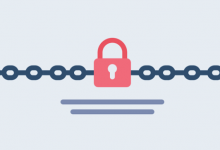Securing your home network: Tips for a safer online experience
Securing your home network: Tips for a safer online experience
In today’s hyper-connected world, having a secure home network is essential to protect your personal information and ensure a safer online experience. With cyber threats lurking around every corner, it’s crucial to take proactive steps to fortify your network defenses. Here are some tips to help you secure your home network effectively.
Keep your network password-protected: The first and most fundamental step in securing your home network is to set up a strong and unique password for your Wi-Fi network. Avoid using default passwords provided by your Internet Service Provider (ISP) as they are often easy to guess. Instead, create a complex password that includes a mix of upper and lowercase letters, numbers, and special characters. Regularly update this password, and make sure you don’t share it with unauthorized individuals.
Enable network encryption: Enable WPA2 encryption (Wi-Fi Protected Access 2) on your router, as it is the most secure option available. Encryption ensures that the data transmitted between your devices and the router is heavily encrypted, making it extremely difficult for hackers to intercept or decipher the information being exchanged.
Change default router login credentials: Once you’ve set up your router, change the default login credentials immediately. Default usernames and passwords are well-known and easy to exploit. Choose a strong username and password combination to prevent unauthorized access to your router’s settings.
Keep your router’s firmware up to date: Router manufacturers regularly release firmware updates to fix vulnerabilities and enhance security. Stay updated with the latest firmware releases and install them as soon as they become available. These updates often include vital security patches that can protect your network from emerging threats.
Enable firewall protection: Activate the built-in firewall on your router. Firewalls act as a protective barrier between your devices and the internet, monitoring and controlling incoming and outgoing network traffic. This helps to filter out potentially harmful connections and provides an added layer of protection against various cyber threats.
Use a separate network for guests: If your router supports it, create a separate guest network for visitors. This isolates them from the main network and prevents unauthorized access to your connected devices. Ensure the guest network has strict restrictions and a unique password that you periodically update.
Disable remote management: Most routers come with a remote management feature that allows you to access and control your router settings from outside your home network. Disable this feature unless you have a genuine need to use it, as it can be an entry point for hackers attempting to gain control of your network.
Regularly update and secure your devices: Your home network security extends beyond just the router. Ensure that all devices connected to your network, including smartphones, laptops, tablets, and smart home devices, are well-maintained. Regularly update their operating systems, applications, and firmware to patch any security vulnerabilities and protect against potential exploits.
Use strong, unique passwords for all accounts: A network is only as secure as its weakest link. Weak or reused passwords can compromise all your efforts in securing your home network. Create strong, unique passwords for all your online accounts, and consider using a password manager to securely store and manage them.
Invest in a robust antivirus solution: Despite taking all necessary precautions, malware can still find its way onto your devices. Invest in a reputable antivirus solution to detect and prevent malware infections. Keep the antivirus software up to date, schedule regular scans, and enable real-time protection for proactive defense against online threats.
Conclusion:
Securing your home network is vital to safeguard your personal information and maintain a safer online experience. By following these tips, you can significantly reduce the risk of falling victim to cyber-attacks and ensure that your network remains a fortress against digital threats. Stay vigilant, regularly update your defenses, and remember that security is an ongoing process that requires continuous effort.





